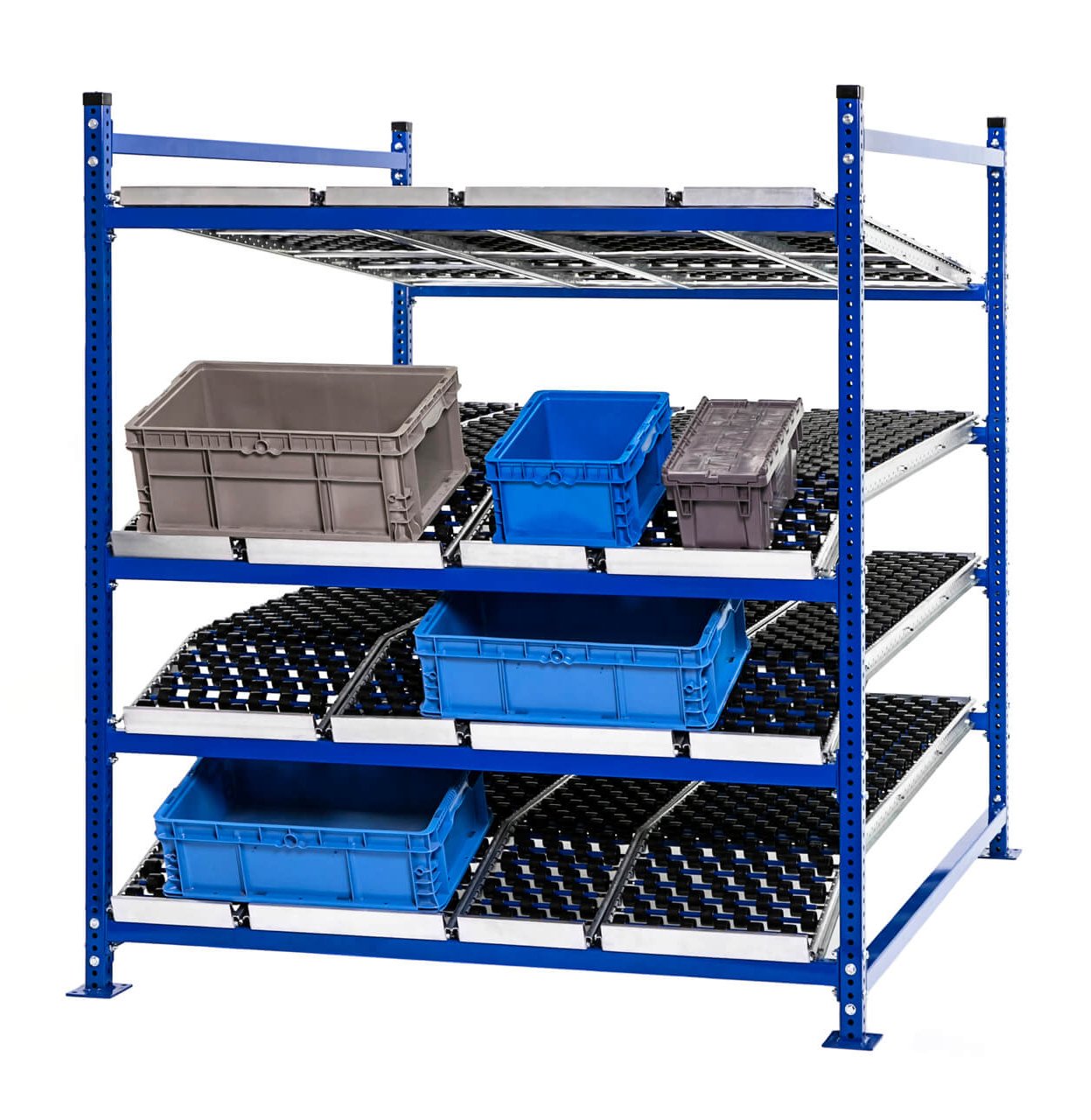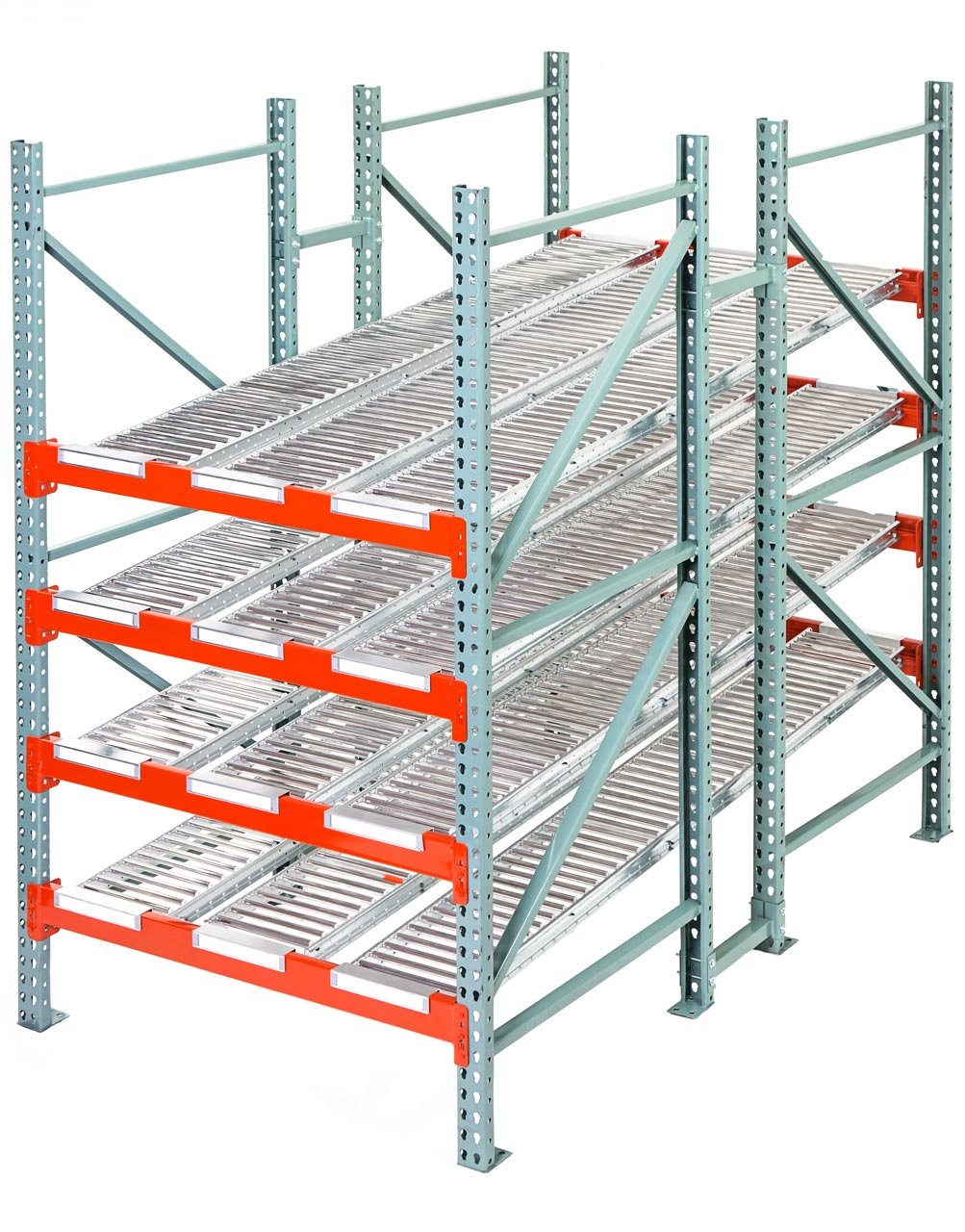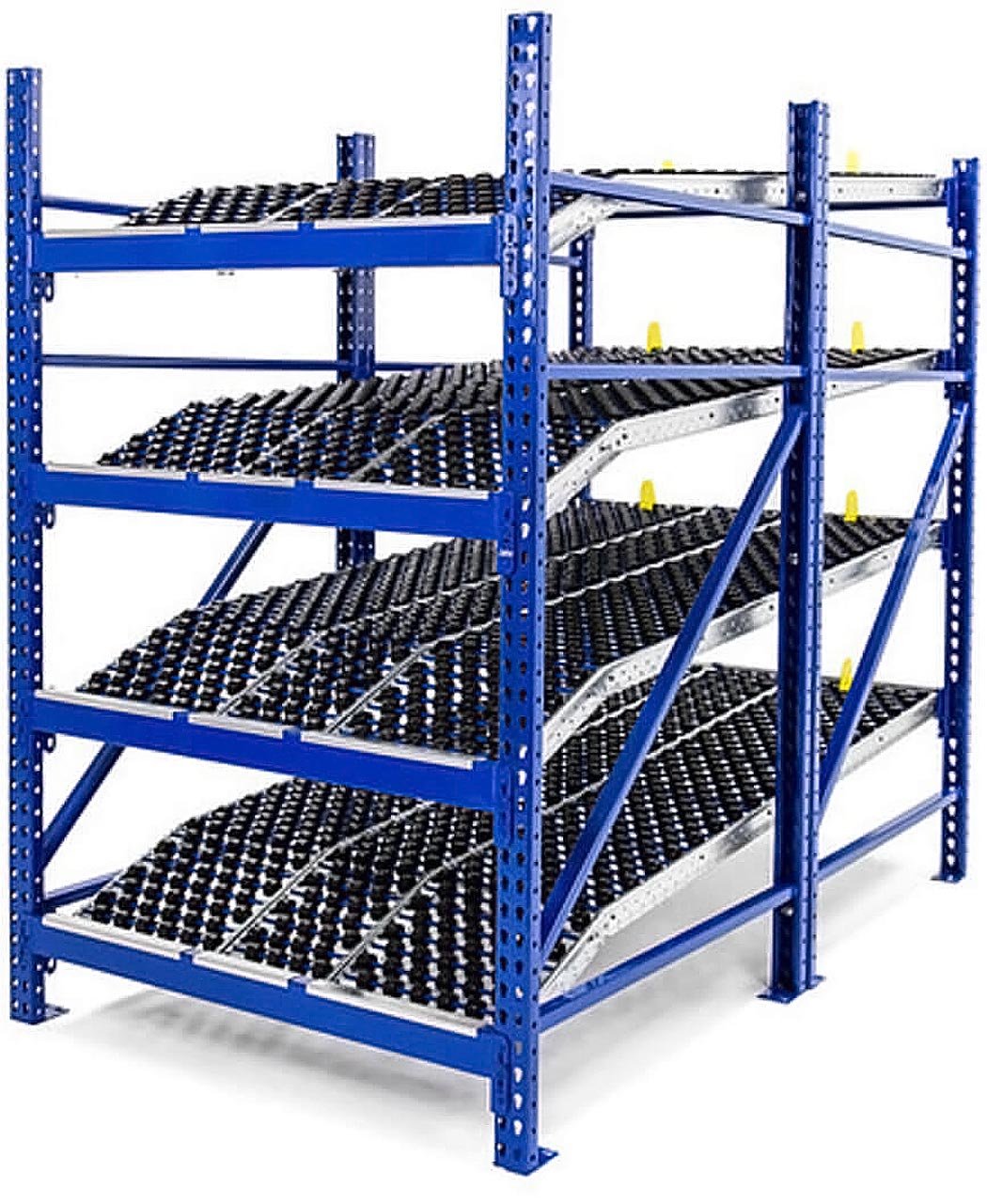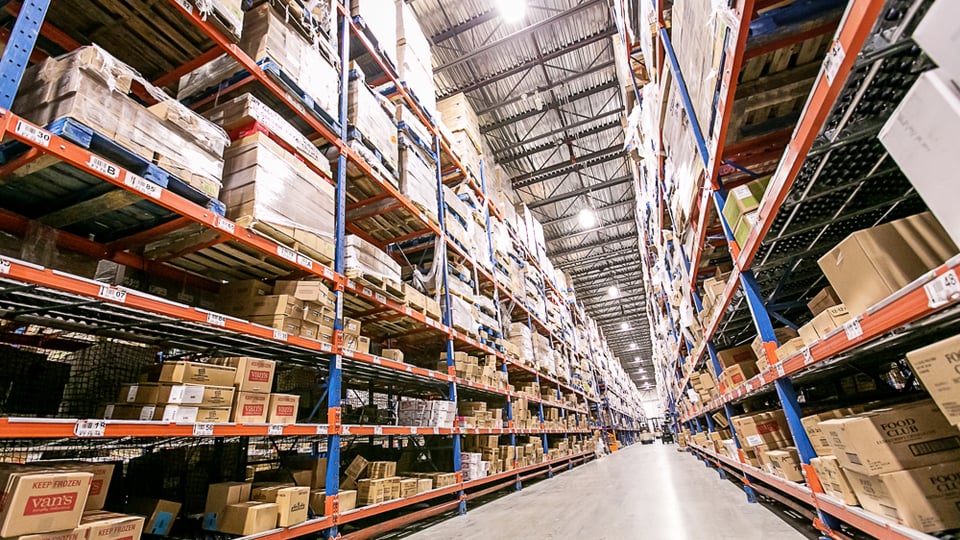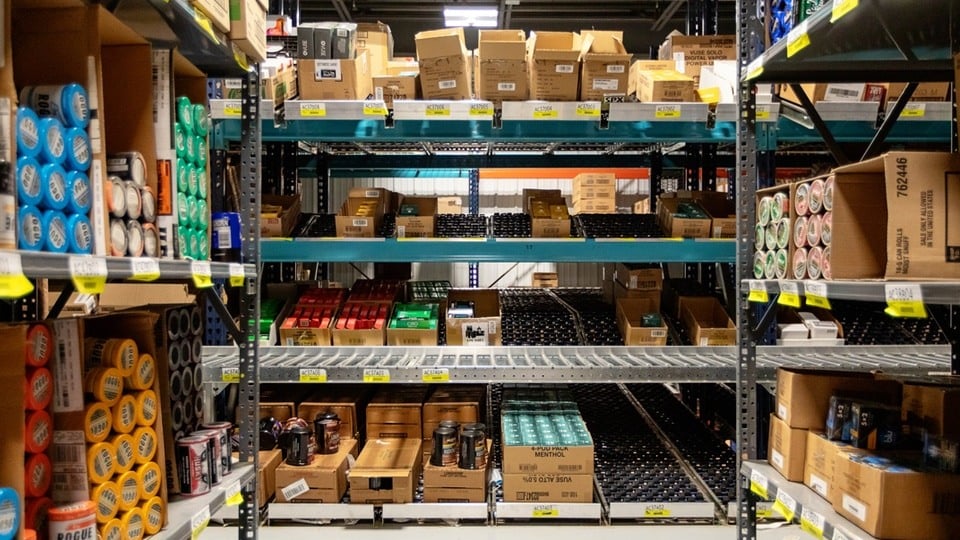
The scene is all too common in fulfillment centers: It’s peak season, and workers are zigzagging across aisles, juggling hundreds of SKUs, and fighting for floor space as last-minute orders flood in. As warehouses add more SKUs and face rising customer expectations for speed and accuracy, it becomes that much more difficult to keep labor costs under control and fit operations within existing floor plans.
Yet, in many warehouses, the problem isn’t the volume of orders or SKU count, but a disorganized approach to fulfillment. Products are scattered haphazardly, forcing workers to wander the warehouse in search of items for each order. Chaos ensues.
Warehouse kitting offers a better way. By pre-assembling individual items into ready-to-ship kits, such as subscription boxes, gift bundles, or back-to-school packs, fulfillment centers can make better use of space and streamline their picking processes.
The result is faster fulfillment, improved labor costs, and a smoother path to scaling up, even under peak demand. Here’s how to fine-tune your warehouse kitting for peak speed and precision.
What Is Warehouse Kitting?
Warehouse kitting involves pre-assembling individual items into ready-to-ship kits that are picked and packed as a single SKU. Unlike bundling, which groups separate products at the point of sale for a discounted price, kitting stores complementary items together as a single unit in the warehouse.
Kitting works well for a whole range of items in warehouse and eCommerce fulfillment: subscription boxes, curated gift sets, product accessory packs, and seasonal promotional packs are all common applications. Preparing these kits in advance simplifies the entire process, from storage to fulfillment.
How Does Warehouse Kitting Work?
In a typical warehouse kitting process, individual components are gathered from inventory, assembled into kits at a dedicated workstation, and assigned a new SKU in the warehouse management system. The completed kits are then stored together in a designated area or at picking stations, ready to ship as needed.

The Case for Kitting: Benefits Beyond Assembly
One of the primary benefits of warehouse kitting is the ability to fulfill orders more quickly. Converting multiple individual picks into a single pick limits travel time and optimizes picking workflows. Rather than scouring the warehouse for multiple SKUs to complete an order, workers can grab one kit and move on.
Kitting also enhances inventory control and SKU visibility. Kits are tracked as a distinct SKU, which simplifies inventory tracking and helps avoid miscounts. This clarity is crucial for facilities that juggle high SKU variability and rapid demand shifts.
Practicing warehouse kitting also helps reduce labor costs, with more workers stationed for fulfillment instead of wandering in search of products. Plus, consolidating components into kits frees valuable real estate, making room for more inventory or additional workstations.
Altogether, kitting workflow optimization is a practical way to improve throughput and make your fulfillment operation more scalable.
Best Practices for Effective Warehouse Kitting
Warehouse kitting solutions are helpful for tackling a range of fulfillment challenges, from growing labor costs to increasing SKU complexity. But simply adopting these methods won’t guarantee your operation will become more efficient and fluid. Here are five tips to make your kitting processes more effective.
1. Standardize Your Workflow
Consistent, repeatable workflows are vital for any kitting effort. Each kit should have a clearly documented list of items and a step-by-step assembly procedure. Thorough training and support can set every team member up to follow these standards and avoid mistakes.
For example, visual standard operating procedures (SOPs) like diagrams at workstations allow workers to verify correct assembly at a glance. Pick-to-light systems and electronic pick lists further enhance accuracy by quickly directing team members toward the right items. Clearly labeled kit bins and designated storage zones also keep items organized and workflows moving smoothly.
2. Consider Ergonomics
Designing for ergonomics is central to kitting workflow optimization. Reducing unnecessary bending, reaching, and walking not only protects workers from injury but also keeps them more productive at each kitting station.
Angled pick points are non-negotiable for an ergonomically focused operation. Clear sightlines enable workers to quickly find and retrieve items, reducing wasted motion. Easy-to-reach shelving, along with adjustable workstations and shallow, organized bins, can eliminate the need for deep bin digging and awkward movements.

3. Prioritize Inventory Organization
Any experienced warehouse operator knows the value of proper inventory organization, but it’s especially vital for kitting. Start by storing kitting items in dedicated zones, rather than scattering them throughout general storage, so workers can find exactly what they need.
Using a first-in, first-out (FIFO) rotation keeps items fresh and minimizes the chances that outdated or damaged products will be included in orders. Additionally, dynamic slotting (adjusting item locations based on order trends and seasonal demand) puts high-demand SKUs close to kitting stations for faster access.
For even more streamlined kitting in fulfillment centers, consider zoning fast-moving items near the kitting station for easy access. Having an organized, thoughtfully arranged inventory keeps your prep and fulfillment processes nimble and ready to scale.
4. Leverage Mobile or Modular Kitting Stations
Leveraging mobile or modular kitting stations is another smart way to make your kitting workflows more flexible. Such systems are easily movable or reconfigurable for seasonal demand surges or new product launches. This adaptability helps your warehouse stay responsive without major capital investments or lengthy reorganization efforts.
Beyond flexibility, the key benefit of modular industrial workstations is that they allow you to bring kits directly to the point of use. Keeping operators close to packing and shipping areas ultimately shortens lead times and makes fulfillment more efficient.
5. Monitor and Improve
Another kitting best practice is to consistently track key performance metrics and use them to guide improvements. Track kitting times, pick accuracy, replenishment rates, and overall throughput per shift to find areas for optimization. Specific indicators like kit assembly time per batch, mis-pick rates, and error-related returns are also valuable.
Following and analyzing these metrics allows you to refine layouts to better support SKU velocity or adjust to new order profiles. If you plan to continuously improve warehouse operations, it begins with these types of data-driven adjustments.
UNEX Solutions for Warehouse Kitting
The right warehouse kitting solutions can turn best practices into real operational gains. UNEX products are designed to improve warehouse efficiency and throughput from several angles, including optimizing kitting workflows.
Here’s how two of our most versatile solutions can help you build and ship kits more effectively.
FlowCell Modular Warehouse Packing Stations
 While modular flow racks are widely known for their role in manufacturing, they also offer advantages in warehouse environments, especially for kitting.
While modular flow racks are widely known for their role in manufacturing, they also offer advantages in warehouse environments, especially for kitting.
FlowCell modular flow racks, which angle items toward the pick face for quick access and visibility, are easily configured into ergonomic workstations that help reduce strain on staff. They’re ideal for centralized kitting stations in eCommerce fulfillment, subscription box preparation, or gift set assembly, where high SKU variability and fast-paced order volumes demand efficient, repeatable processes.
These modular racks can be set up as standalone kitting workstations, integrated into assembly lines for pre-packing kits, or combined into larger packing and staging areas to keep operations fluid. Adjustable shelves, pick trays, and accessory options allow operators to customize each station to match specific product profiles or seasonal kit requirements. Whether you need compact mobile carts or larger stationary setups, FlowCell is nimble enough to scale and reconfigure as your SKU mix evolves or peak demand periods hit.
Ultimately, modular flow racks offer the perks of dynamic storage with maximum flexibility. Fulfillment teams can easily stage batch picks or pre-pack items in advance, helping reduce bottlenecks when demand surges.
SpanTrack Carton Flow
 Carton flow racks provide a simple way to keep warehouse kitting stations organized and efficient. UNEX offers two primary options, SpanTrack Lane and SpanTrack Wheel Bed, both of which drop directly into existing shelving structures to convert them into dynamic storage solutions. Additionally, SpanTrack rollers and wheel beds are available in stand-alone, FlowCell racks, and Roller Rack, allowing for a wide range of kitting, packing, and staging applications.
Carton flow racks provide a simple way to keep warehouse kitting stations organized and efficient. UNEX offers two primary options, SpanTrack Lane and SpanTrack Wheel Bed, both of which drop directly into existing shelving structures to convert them into dynamic storage solutions. Additionally, SpanTrack rollers and wheel beds are available in stand-alone, FlowCell racks, and Roller Rack, allowing for a wide range of kitting, packing, and staging applications.
In fulfillment centers, SpanTrack works especially well in replenishment zones or pre-pack staging areas, supplying kitting stations with a continuous, accessible stream of products. Designed for FIFO inventory rotation, these racks ensure items are always positioned at the pick face so kitting workflows are uninterrupted. Customizable lanes and flexible wheel beds can fit a variety of SKU sizes, kit components, and packaging needs.
By improving product visibility and limiting unnecessary handling, SpanTrack helps fulfillment teams move faster, pick more accurately, and keep a steady pace, no matter the demand level. With so many options and configurations, it’s an ideal choice for all kinds of kitting setups, from simple pre-pack stations to complex multi-SKU assembly areas.
Start Optimizing Your Warehouse Kitting Process Today
A well-designed warehouse kitting system can transform your fulfillment operations, giving you the agility to meet seasonal surges and the flexibility to scale for new product launches. By combining proven best practices with flexible, ergonomic equipment, warehouses can prepare their kits more efficiently and optimize fulfillment to meet rising customer expectations.
When you mix the right tools with a dialed-in approach, your kitting process becomes an engine for growth and competitive advantage. Contact UNEX to learn how SpanTrack and FlowCell can boost your kitting efficiency and keep your fulfillment processes moving at top speed.
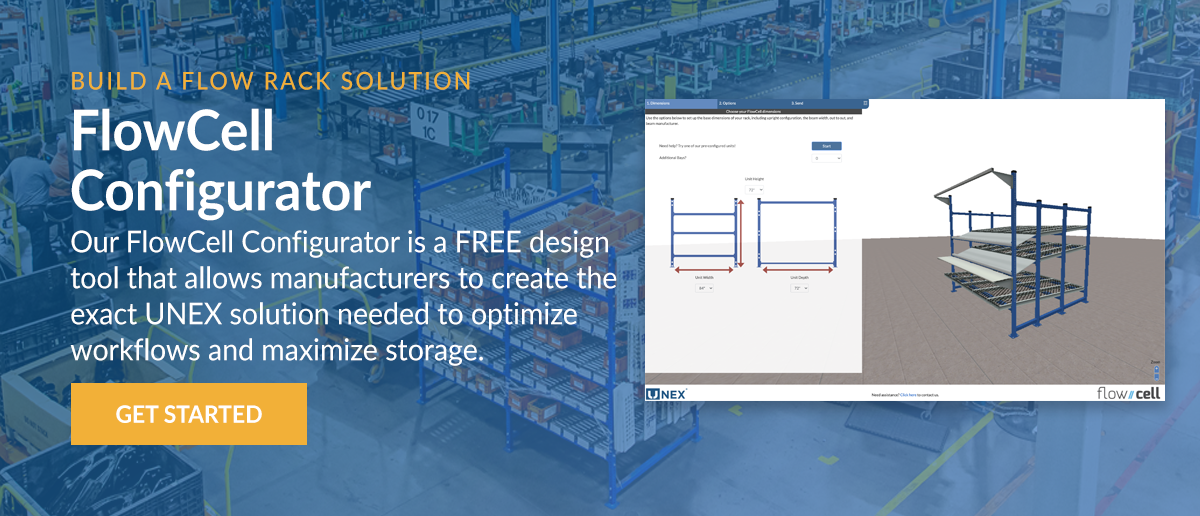



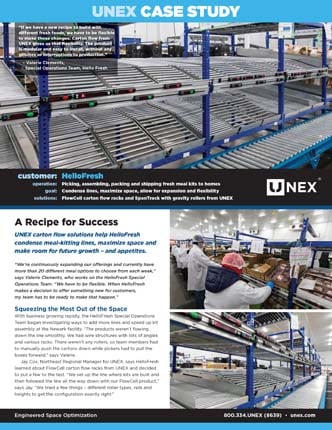

 While
While  Carton flow racks provide a simple way to keep warehouse kitting stations organized and efficient. UNEX offers two primary options,
Carton flow racks provide a simple way to keep warehouse kitting stations organized and efficient. UNEX offers two primary options, 